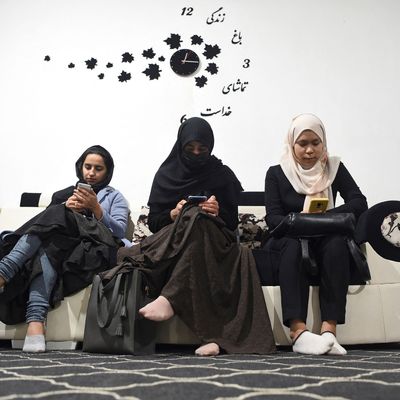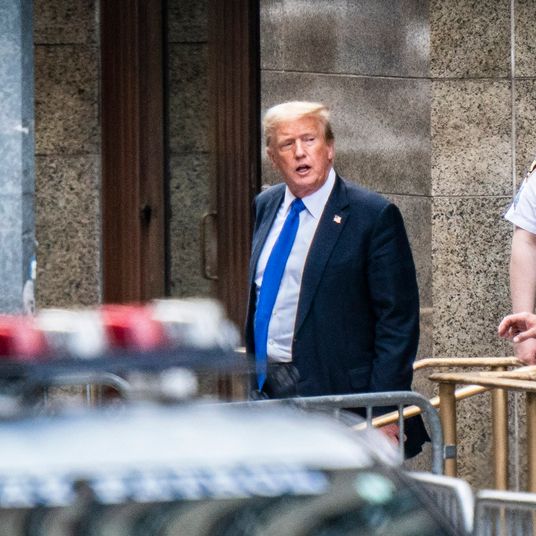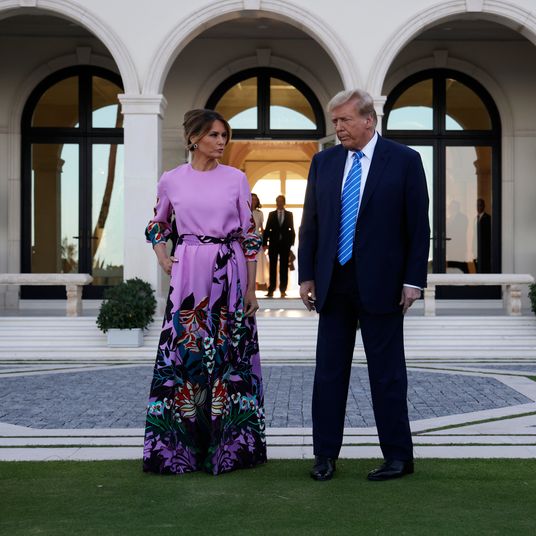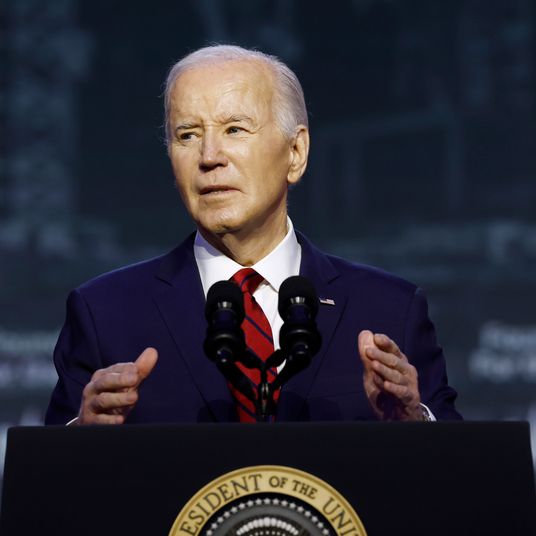
This article was featured in One Great Story, New York’s reading recommendation newsletter. Sign up here to get it nightly.
Arezo doesn’t recall exactly how it happened. She remembers watching news footage of the Taliban milling around the presidential palace after then-President Ashraf Ghani fled Afghanistan, their rifles on display atop his lofty, glass-top desk. She remembers being forced to leave her job, which she loved, as a web designer and reporter’s assistant. As a Shia Muslim, she remembers fearing for her life, after hearing rumors that the Sunni Taliban were breaking into people’s homes, kidnapping anyone they saw as a dissenter. But she also remembers, in the midst of all this, downloading an app.
It was this app — or rather the network it facilitated — that allowed her to provide for her family in the face of widespread food insecurity and a national liquidity crisis. “It was a kind of currency,” she explains how she first understood it, “equal with a U.S. dollar.” Cryptocurrency, she says, has since become a fixture of her day-to-day life.
In the year since the Taliban’s takeover last September, cryptocurrency use in the country mushroomed. Apart from the Hawala system, an informal money transferring service popular across the Middle East and South Asia, crypto has become one of the only ways to reliably send money in and out of Afghanistan, its banks stuck in a perpetually sanctioned, purgatorial state. Increasingly, NGOs rely on it as a means of delivering aid and are conducting pilot programs to test its reliability. Jeremiah Centrella, who is helping aid groups launch crypto programs in various countries, said at least four organizations that he works with are considering adopting crypto in Afghanistan, and one is currently using the technology there. Local businesses have also begun using crypto to process international transactions, particularly in countries where Hawala isn’t available. And, for a growing number of young women like Arezo, who are not allowed to work, it’s also become a source of income.
For crypto-enthusiasts, the blockchain’s potential to create a bank-free utopia is best observed in countries whose economy is, in some way or another, compromised. Despite the cultish grift that has come to define crypto in the United States, a use-case like Afghanistan acts as a sort of paragon of its initial objective: decentralized global finance. But while it’s true crypto use in Afghanistan continues to scale, so too do the concerns around it.
In 2018, Arezo, round-faced with a shy, dimpled smile, graduated from a specialized tech program for women called Code to Inspire (she’s asked that we refer to her only by her first name to protect her identity). The program, which currently has around 100 students and five teachers, was based in Herat, a bustling city in a northwest pocket of the country surrounded by sprawling vineyards, but has resorted to online school since the Taliban came into power. “I was interested in the computer and its programs and felt that I could create a better future for myself,” Arezo says of why she first applied to CTI. For three years, she learned about coding and web design, eventually leaving to attend university and find full-time employment, but she kept in touch with the school’s founder, Fereshteh Forough.
It was Forough who first instructed Arezo, now 20 years old, on how to create a digital wallet. Forough has lived in the U.S. since her family fled Afghanistan in the 1980s and now resides in Boston. At the time of the Taliban’s siege, she repeatedly attempted to send aid to her students to no avail. Afghanistan’s central bank was frozen almost immediately, and the international banking network SWIFT suspended financial transactions in the country. Harsh sanctions severed most of the country’s foreign aid, upon which the bulk of its budget relied, and most banks were wary of working with NGOs, making any kind of humanitarian support to the increasingly impoverished country virtually impossible.
As the country’s economy spiraled then stalled, the U.S. Treasury issued general license after general license, insisting it was perfectly fine to send money in and out of Afghanistan, but the banks remained, for the most part, unwilling to risk it. Some organizations turned to the Hawala networks, but fears of Taliban interference, along with the fact that Hawala wasn’t used by formal vendors or available in many countries, made it less practical. Crypto, in effect, was a last resort. In September 2021, just a few weeks after the Taliban established a de facto government and began sustained efforts to erase women from society, Forough partnered with Binance and helped 100 of her most in-need girls create digital wallets. “The privacy and protecting their identity and the feeling that they had power over their finances — they had never experienced something like that,” says Forough. “It was so eye opening for them to see that something like that exists.”
Arezo, along with a few other girls from the school, grew curious about this new form of currency that seemed to exist on a plane the Taliban not only didn’t understand but wouldn’t be able to regulate if they did. Code to Inspire began formally offering courses on the blockchain around two years ago, but Arezo, having already graduated by that point, took it upon herself to learn about the technology. A few months into receiving a Binance allowance, she began watching Youtube tutorials and reading books on crypto. She followed crypto accounts on Twitter, educating herself on the lingo, attempting to develop an intuitive understanding of the market’s vibrations. Now, she’s become somewhat of a swing-trader, “buying low and selling high,” she says. She trades on the Binance app, which she has installed on both her phone and laptop. Since she started a few months ago, she’s made the equivalent of $200 — over a month’s salary from her former employer.
Another STEM program for women, LearnAfghan, run by Pashtana Zalmai Khan Dorani, has also begun offering courses on the blockchain, in addition to standard subjects like biophysics and chemistry. Dorani, in partnership with a few humanitarian organizations that requested anonymity, also sends the girls a monthly allowance. But, rather than have it function as a straightforward exchange, Dorani encourages the girls to invest, teaching them the ups and downs of the market, just as Arezo and others have learned to do on their own. Dorani, who moved to the U.S. in December 2021, says some teachers have even asked to be paid in cryptocurrency. For Forough and Dorani, the goal is to find a way to ensure financial support for the girls in the short-term — but also independence in the face of oppression and surveillance. “The Taliban want to wipe out women in society,” says Arezo. “They don’t allow them to work, study, feel safe or even go anywhere without Mahrram” — a male family member — “and if we want to criticize the Taliban, we will be killed.”
Programs like Code to Inspire and LearnAfghan have always been a rarity, but, under the Taliban, their work is exponentially harder. Code to Inspire is technically registered as an NGO, but the Taliban forced them to shut their doors shortly after they took power, along with a number of other local organizations, declaring their licenses invalid. After over a year, they’ve finally gotten the renewal, says Forough, and plan to re-open their physical location later this year. LearnAfghan is essentially operating in secret, rigorously vetting both students and teachers in the hopes that they can keep it hidden from the Taliban’s probing eye. Despite the challenges, both schools have continued to grow. LearnAfghan currently has over 400 students, all girls between the ages of 13-18, and over 20 teachers across Kandahar, Kabul, and Bamyan provinces. “We like to call them leaders,” says Dorani of her students. “We’re trying to give them soft skills on crypto and STEM, anything that will help them become their own leaders, become their own people.”
Those skills are all the more essential in a country that is swiftly becoming home to the world’s largest humanitarian crisis. A UN report from April estimated that well over half the population is facing food insecurity. Before they were removed from the workforce, women like Arezo and her mother were the primary breadwinners of a significant number of households in Afghanistan, its population shriveled by over two decades of nonstop conflict. Only those working in primary education or healthcare have been allowed to keep their jobs, and, even then, many of them aren’t paid on time, if at all.
Since 2021, Afghanistan’s central bank hasn’t been able to access foreign currency reserves, prompting a major liquidity crisis. Afghan men are only allowed to withdraw up to 200,000 Afghani, around $1,200, each month. The vast majority of women aren’t allowed to have bank accounts, and many with pre-Taliban accounts have had their assets frozen.
In the world of humanitarian aid, unreliable local currency is not at all uncommon. Crypto-curious NGOs have begun experimenting with the technology in places like Ukraine, Kenya and Uganda, where local economies are similarly debilitated—though many organizations remain reticent about it, wary of backlash from potential donors. “The main concern,” says Centrella, “is with the public narrative and it just being a subject that will have controversy around it.” To circumvent that narrative, NGOs primarily deal with stablecoins like Tether (USDT). While still technically cryptocurrency, stablecoins function more as standard digital currency, backed by cash or cash-equivalent reserves and pegged to the U.S. dollar. Since August, USDT has been adopted by most money exchangers in the country. Up until last month, some even offered a 3 percent premium for exchanging USDT into Afghani because “it’s more valuable to them,” says Sanzar Kakar, founder of a digital payment system called HesabPay. “They’re so hungry for USDT that they’re willing to pay extra for it, because that then allows them to transact internationally.”
But all of that — crypto’s gleaming newness, its promises of privacy and global efficiency — are conditional. While crypto’s complexity played in its favor, effectively shielding it from a tech-averse Taliban, the regime has since begun cracking down on what they perceive to be “gambling.” Last month, they closed one of the largest markets for money exchangers of USDT, mistaking it for a day trading firm.
There are also those general fears around crypto that, in the last few months, have proven all too prescient. While stablecoins are thought to be immune to market conditions, USDT lost its dollar peg for the first time in May, dipping to $0.969. It quickly recovered, but dipped again in June, this time to $0.9988, following major crypto lender Celsius Network’s collapse. For most, it was hardly consequential, but it did raise questions over the presumed security of stablecoins. In a statement, USDT wrote that the wobble was “an unfortunate result of market volatility and extreme market conditions,” but “there is no correlation between this investment and our own reserves or stability.” Arezo tells me that she lost around $20 when Luna, an algorithmic stablecoin (meaning it wasn’t formally backed by reserves and its peg was maintained through algorithmic evaluation) crashed in May. In total, she’s recorded losses of $80 — just under half a month’s salary from her old job — from crypto’s recent volatility.
Even beyond that, there are on-the-ground challenges with security. Young Afghan women certainly benefit from the blockchain’s peer-to-peer anonymity, but some argue it might also enable nefarious activity. Though Centrella argues that independent blockchain analysis, which would allow independent entities to track whether or not funds are being put into mixers, a service that muddles who’s sending or receiving cryptocurrency, anonymizers, or prohibited party wallets. “Nobody wants to talk about the risks that exist with current systems,” says Centrella. “If you do a real risk analysis around cryptocurrency, it’s much lower.” HesabPay works with three different blockchain analysis firms to keep track of transactions. “It’s very easy to actually figure out where funds went and then recover it,” says Kakar. “And they have recovered large funds from people that have stolen it before as well.”
What perhaps can’t be remedied long-term is the broad skepticism around crypto and limited digital literacy in the country, as well as lack of access to internet and smartphones. But Dorani believes that shouldn’t deter people from learning about it. “That’s what we’re supposed to do as humans,” she tells me. “That’s our responsibility. If we understand something better, we’re supposed to make sure that others who cannot understand it at least access it. At least benefit from it.”
Every day, on Arezo’s walk to the university, which she was only recently allowed to resume attending, she passes a Taliban flag, a crisp white square against a boundless blue sky. For the last 20 years, as long as she’s been alive, her country has been under some form of siege. She’s well aware cryptocurrency might not answer all her problems, but for now, it provides her with a sense of security — of both the material and existential varieties. “The Taliban want to remove women from society and my biggest fear,” she says, “is to disappear.”





























